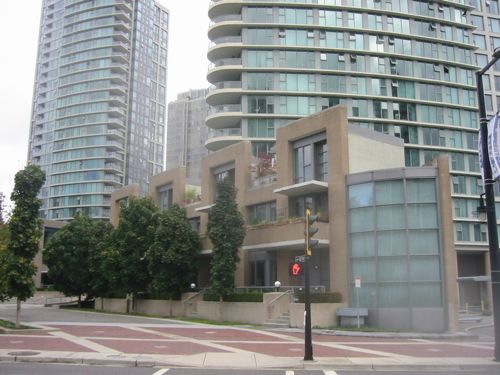Reading: Made for Walking by Julie Campoli
Every so often I get a book to review that I keep repeating “Yes!” as I go through it, Made for Walking is that sort of book:
Landscape architect and urban designer Julie Campoli challenges our current notions of space and distance and helps us learn to appreciate and cultivate proximity. In this book, developed as a follow-up to Visualizing Density (2007, co-authored with aerial photographer Alex S. MacLean), she illustrates urban neighborhoods throughout North America with hundreds of street-level photographs.
Researchers delving into the question of how urban form affects travel behavior identify specific characteristics of place that boost walking and transit use while reducing VMT. In the 1990s some pinpointed diversity (of land uses), density, and design as the key elements of the built environment that, in specific spatial patterns, enable alternative transportation. After a decade of successive studies on the topic, these “three Ds” were joined by two others deemed equally important—distance to transit and destination accessibility—and together they are now known as the “five Ds.” Added to the list is another key player: parking.
This book should be required reading for everyone involved in neighborhoods, development, transit in the St. Louis region – especially St. Louis aldermen. Camponi articulates why it is beneficial to change land use patterns, accompanied by hundreds of images to make her points.

One example I recognized immediately, the Coal Harbour area of Vancouver BC. Here the sidewalks in an area of new high rise buildings are pleasant because smaller-scale buildings front onto them, defining them.

Here is the chapter list:
- Everything is somewhere else
- Five Ds and a P
- Neighborhood Form
- Twelve places made for walking
- Low-carbon neighborhoods
- The shape of things to come
- Good bones
Highly recommended!
— Steve Patterson



 Happy Halloween and thank you so much for reading!
Happy Halloween and thank you so much for reading! Take the children in your life on their own journey of discovery: tag along with Ella, her impatient little brother Jake, and their Grandpa as they explore the outside, inside, and very, very top of the Gateway Arch, on the Mississippi riverfront in St. Louis, Missouri. While Jake just wants to get to the top as fast as possible, Ella is intent on impressing Grandpa with everything she has learned about the landmark and its history. Together, the family discovers fascinating artifacts-a bison, a great grizzly bear, a tall statue of Thomas Jefferson-while Grandpa spins tales of his own memories, as a young man, of watching the Arch being built. More than just an architectural feat, the Arch embodies the history, culture, and spirit of westward expansion, exploration, and individual dignity. Don’t worry, they ?nally make it to the top . . . and what Jake wants then will resonate with your own young explorers! Amanda E. Doyle is an ardent St. Louis transplant, writes about the city for visitors and locals, and spends lots of time looking up with her own intrepid family. She is the author of the popular St. Louis title “Finally, a Locally Produced Guidebook to St. Louis, by and for St. Louisans, Neighborhood by Neighborhood.” (
Take the children in your life on their own journey of discovery: tag along with Ella, her impatient little brother Jake, and their Grandpa as they explore the outside, inside, and very, very top of the Gateway Arch, on the Mississippi riverfront in St. Louis, Missouri. While Jake just wants to get to the top as fast as possible, Ella is intent on impressing Grandpa with everything she has learned about the landmark and its history. Together, the family discovers fascinating artifacts-a bison, a great grizzly bear, a tall statue of Thomas Jefferson-while Grandpa spins tales of his own memories, as a young man, of watching the Arch being built. More than just an architectural feat, the Arch embodies the history, culture, and spirit of westward expansion, exploration, and individual dignity. Don’t worry, they ?nally make it to the top . . . and what Jake wants then will resonate with your own young explorers! Amanda E. Doyle is an ardent St. Louis transplant, writes about the city for visitors and locals, and spends lots of time looking up with her own intrepid family. She is the author of the popular St. Louis title “Finally, a Locally Produced Guidebook to St. Louis, by and for St. Louisans, Neighborhood by Neighborhood.” (